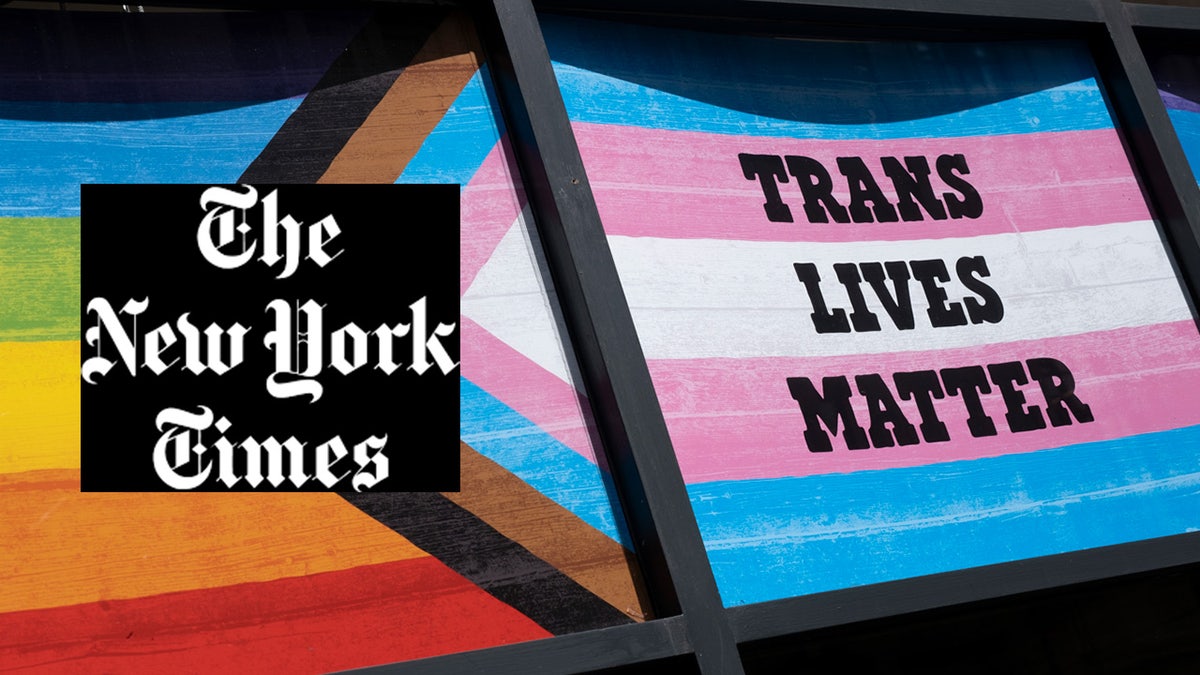The gender ideology debate is ‘out of control’: Charly Arnolt
OutKick host Charly Arnolt joins ‘The Story’ to discuss the transgender documentary that sparked controversy at Twitter.
A New York Times section for children is raising eyebrows for pushing wokeness to kids.
"New York Times for Kids," a special section which can only be found in physical copies of the Sunday paper once a month or bought on The Times' online store, is described on its store page as "intended for readers ages 8 to 13 and will help your kids understand the world."
However, as first reported by The Spectator's Washington editor Amber Athey, this special kids' section, complete with an Editor's Note saying, "This section should not be read by grown-ups," targets children with far-left ideology.
The Times' online store advertises its April 2023 installment, dubbed "The Puberty Issue," in innocuous terms, saying it covers, "Periods, deodorant, acne, overwhelming crushes, moods, middle school bathrooms, gender, parents, friendships, mustache fuzz, bras. It's all inside." But parents could be surprised at how different puberty lessons have become since they were kids, with screenshots of the internal pages provided by The Spectator showing a lot of content based on transgender ideology.

The New York Times for Kids section often pushes LGBTQ ideology to children. (Background photo by Mike Kemp/In Pictures via Getty Images)
Sometimes the content is sprinkled in. One page had cartoons filling in the blank after "The first time I …" with things like "got a zit," "suddenly got tall" and "realized I had B.O." along with "realized my gender identity" and "told people at school my pronouns."
Other times there are specific sections. One article, headlined "When it doesn't feel right," talked about what to do about gender dysphoria. A doctor explained, "I've had a good number of young people describe it as having really intense feelings of anger, sadness or insecurity about themselves or their bodies." The New York Times then said, "Those feelings are a signal that you should ask for help."
Children are told to reach out to a "teacher, school nurse, or counselor" in case they don’t feel "comfortable or safe talking to their families." The Times also points to the Trevor Project and Gender Spectrum as organizations that can "provide accurate information about what's happening in your body."
The piece later suggested finding a "supportive space with friends or a counselor" to "let you safely explore what feels best, like changes to your name, pronouns, or style of dress." This process of making outward gender changes is often referred to as social transitioning. Schools have increasingly come under fire for helping children socially transition without their parents' knowledge or consent.
Kids whose parents are on board are encouraged to seek "a provider who can help your family explore the range of gender-affirming care that’s available, including medical care."
Another section of the Puberty Issue was about "Trans kids in trouble." The blurb said, "Healthcare for transgender kids has been in the news a lot," lamenting that "at least 15 states have banned treatment for gender dysphoria." It went on to tell readers, "The laws keep trans kids from getting the treatments they need. But experts are clear: Access to care saves trans kids’ lives."

The New York Times Building in midtown Manhattan. (Fox News Photo/Joshua Comins)
"The kids section reinforces its obsession with non-gender-conforming children by sharing stories from kids who identify as nonbinary, gender-fluid or transgender," Athey observed in her investigative piece, pointing out Desmond Napoles whom she described as "the infamous 'drag kid' Desmond is Amazing, who performed at a nightclub where adult men threw money at him and joked about doing ketamine at the age of 11."
The instagram account for the New York Times for Kids section has numerous other posts related to topics on identity politics, condemning concern about explicit books in schools and bills blocking transgender surgeries on minors.
One 2020 Instagram post touted "6 books to help you understand race and racism." This list included books such as "Stamped: Racism, Antiracism and You" by Jason Reynolds and Dr. Ibram X. Kendi.
Athey described Ibram Kendi's book as one that "rejects the notion that America is a meritocracy and that the concept of the American Dream is ‘rooted in whiteness.’" She wrote, "Racism, the book argues, is ‘woven into the fabric of American institutions.’"
Athey also reported New York Times for Kids editor Amber Williams said, "We’ve worked with Nikole Hannah-Jones and others who are working on the 1619 Project to bring some of those stories and pages to the New York Times for Kids and to keep those stories alive, we did a race package last summer when there were all the protests."
CLICK HERE TO GET THE FOX NEWS APP
The 1619 project, created by New York Times writer Hannah-Jones, reframes American history as being focused on racial oppression, arguing that America was founded when African slaves arrived in 1619, rather than with the Declaration of Independence in 1776.


